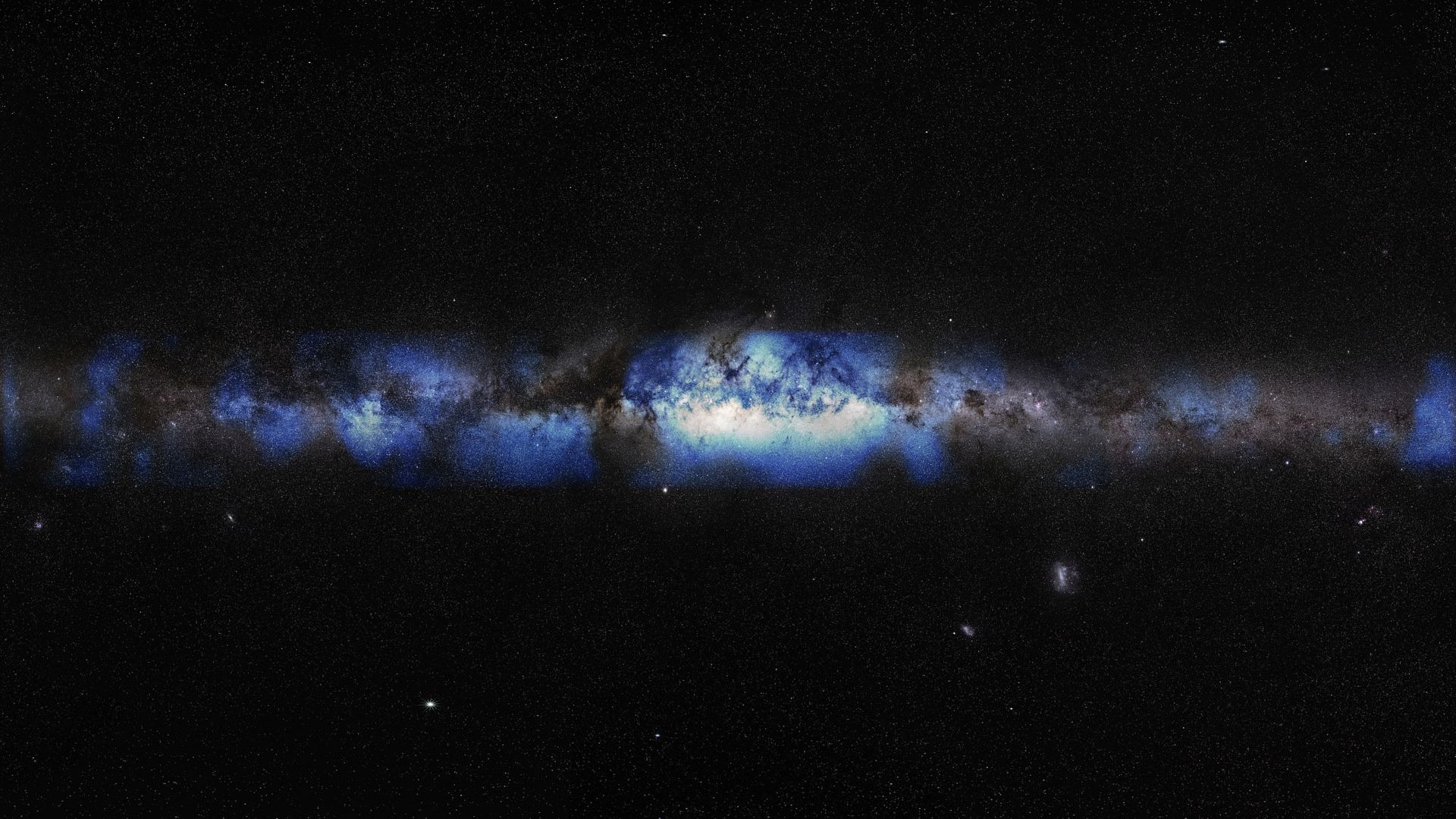For thousands of years, people have looked with awe at the huge stream of stars that shine in the night sky of the Earth, forming the star track of the Milky Way. However, our home galaxy is now being observed for the first time in a completely new way.
Scientists have stated that they have created an image of the Milky Way not based on electromagnetic radiation (light), but on the basis of hard-to-detect subatomic particles called neutrinos. They discovered high-energy neutrinos in pristine ice deep beneath the surface of Antarctica, and then traced their source to locations in the Milky Way. These particles were first observed when they originated from our galaxy.

This picture is radically different from what we see with our own eyes or with the help of instruments that measure other electromagnetic sources, such as radio waves, microwaves, infrared, ultraviolet, X-ray and gamma radiation. What is visible on the map is not stars or incandescent interstellar gas that emit light, but mysterious sources of neutrinos arising in the galaxy. Perhaps these are the remnants of the explosive death of stars, which are called supernovae.
Source of the origin of neutrinos
Neutrinos are electrically neutral. They rarely interact with matter, for which they received the nickname “ghost particle”. Traveling through space, neutrinos freely pass through matter – stars, planets, and even people.
Many mysteries of the Universe cannot be solved with the help of light alone. The possibility of using particles such as neutrinos in astronomy allows for more thorough research. Neutrinos come from the same sources as cosmic rays — particles of the highest energy that have ever been observed. Cosmic rays, like electrically charged particles, cannot be traced directly to their source, because strong magnetic fields in space change their trajectory. But since even the strongest magnetic field does not affect the trajectory of neutrinos, the direction from which they come points directly to their original source.
A ten-year experiment
The IceCube Neutrino Observatory, a cubic particle detector consisting of 5,000 sensors built deep in the Antarctic ice, has been searching for neutrino radiation in the Milky Way for decades and has found evidence of additional neutrino radiation along the Galactic plane, which is consistent with the distribution of gamma ray radiation.
The researchers additionally used machine learning to help distinguish neutrinos originating from our galaxy from those originating from other places. They published an illustration of the distribution of neutrinos in the Milky Way, where their huge concentration in the core of the galaxy was noticeable.
How neutrinos arose is a debatable question. But the observations are consistent with the idea of diffuse neutrino emission in the Milky Way. The sources of their origin in our galaxy remains a mystery.
Earlier we reported on how a special feature of the Milky Way could hit alien astronomers.
According to Sci News
Follow us on Twitter to get the most interesting space news in time
https://twitter.com/ust_magazine

